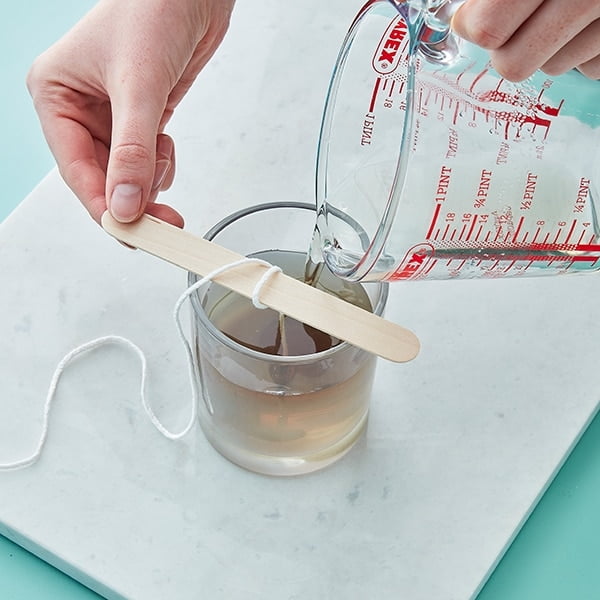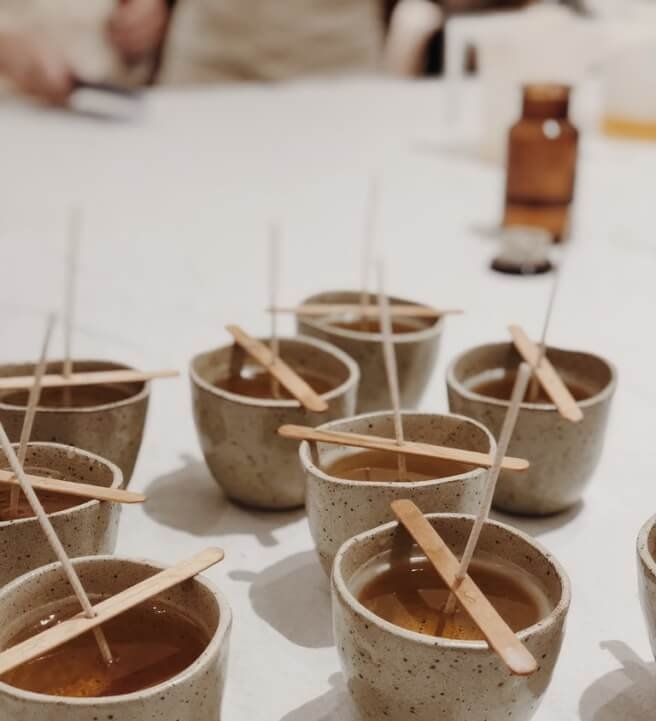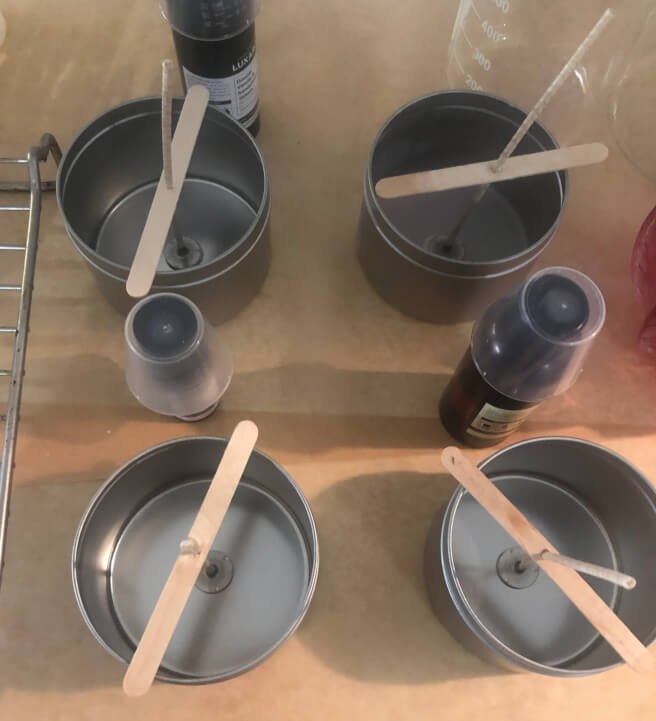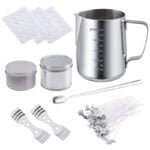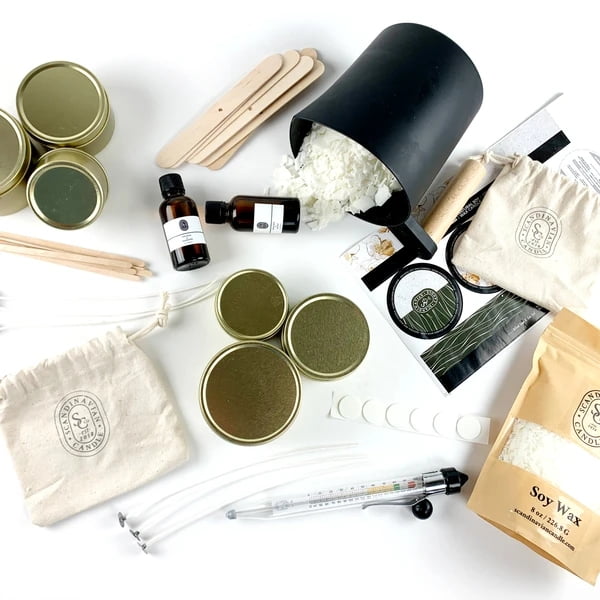The candle making industry has witnessed a surge in popularity as an attractive small business venture. In this blog post, we will explore the world of candle making and why it presents a profitable and rewarding business opportunity. Whether you have a passion for creating exquisite candles or are looking for a flexible and creative way to earn income, starting your own candle making small business may be the perfect fit for you.
Candle making is more than just an art form – it is a craft with a rich history and cultural significance. We will delve into the evolution of candle making as an art form and explore the different types of candles and their unique significance. Quality craftsmanship is essential in this industry, and we will discuss why it plays such a vital role in creating exceptional candles.
Identifying your niche within the candle making industry is crucial for success. Through market research, we will guide you on how to identify your target audience and analyze your competition. Differentiating yourself from other candle businesses is key, so we will also discuss how to choose your unique selling point and build a strong brand identity.
By diving into essential ingredients and supplies needed for candle making, we will provide you with a comprehensive list of necessary materials and equipment. Detailed explanations of different types of waxes, wicks, and fragrances, coupled with tips on sourcing high-quality materials on a budget, will help set your products apart.
In upcoming sections of this blog post series, we will cover various topics such as candle making techniques and safety precautions, designing and packaging your candles attractively, pricing and marketing strategies for your products, as well as building a sustainable candle making business that can thrive in today’s competitive market. So let’s begin this exciting journey into the world of starting your own candle making small business.
The Art of Candle Making
The art of candle making has a rich history that dates back thousands of years. From ancient civilizations to modern times, candles have played an important role in religious ceremonies, rituals, and everyday life. Understanding the history and evolution of candle making as an art form is essential for anyone looking to start their own candle making small business.
History and Evolution
Candle making can be traced back to ancient Egypt, where the earliest candles were made from rushes soaked in animal fat. Over time, the process of candle making evolved, with different cultures using a variety of materials such as beeswax, tallow, and bayberry wax. The development of new techniques and materials led to the production of more refined and long-lasting candles.
During the Middle Ages, candle making became an important industry in Europe. The trade guilds played a significant role in regulating the quality of candles produced. By the 18th century, advances in technology allowed for the mass production of candles using paraffin wax. This led to a shift from candles being primarily used for lighting purposes to becoming decorative and aromatic items.
Types of Candles
Today, there are a wide variety of candles available on the market, each with its own significance and purpose. Some common types include container candles, pillar candles, taper candles, votive candles, and tea lights. Container candles are poured into containers like jars or tins and are popular for their versatility and ease of use.
Pillar candles are freestanding and come in various shapes and sizes. Taper candles are typically slender with a pointed top and are often used for formal events or religious ceremonies.
Different types of candles can be made using different techniques and materials. Beeswax is known for its natural scent and clean burn, while soy wax is popular for its eco-friendly properties. Each type of wax requires specific handling techniques to achieve optimal results in terms of fragrance throw and burn time.
Quality Craftsmanship
Quality craftsmanship is essential in candle making to create products that are visually appealing, long-lasting, and safe to use. Attention to detail in the selection of ingredients, measurement of materials, and temperature control during the pouring process all contribute to the overall quality of the finished candles.
Additionally, artistry can be incorporated into candle making through the use of colorants, additives, and unique fragrance combinations. The art of scent blending requires a deep understanding of fragrance notes and how they interact with one another. This skill allows candle makers to create signature scents that set their products apart from others on the market.
Identifying your Niche in the Candle Making Industry
Market research to identify target audience and competition
– Conduct thorough market research to understand the current landscape of the candle making industry. This includes identifying your target audience, analyzing their preferences, and understanding their purchasing habits. By knowing your potential customers, you can tailor your products and marketing strategies to meet their needs.
– Research the competition in the candle making industry to gain insights into what products are currently available in the market. Identify their strengths and weaknesses, such as pricing, product quality, or branding. This will help you position your business in a unique way by offering something different than what is already available.
Choosing a unique selling point for your candle business
– The candle making industry is already saturated with various types of candles. To stand out from the competition, it is essential to choose a unique selling point (USP) that sets your candle business apart. Consider what makes your candles special and how they cater to specific customer needs or preferences.
– Your USP could be based on factors such as using organic or sustainable materials, offering custom-made or personalized candles, or specializing in a specific theme or fragrance niche. By choosing a USP that aligns with your target audience’s interests and values, you can carve out a niche for yourself in the market.
Importance of branding and differentiation
– Once you have identified your target audience and chosen a USP for your candle business, it is crucial to develop a strong brand image that reflects these unique qualities. Branding encompasses everything from your company name, logo design, packaging, website design, and overall aesthetic.
– Consistency in branding helps create recognition and loyalty among customers. It also helps differentiate your products from competitors’ offerings. Consider developing an attractive and recognizable brand identity that communicates the essence of your candles and appeals to your target audience.
Essential Ingredients and Supplies
When starting your own candle making small business, it is crucial to have a good understanding of the essential ingredients and supplies needed. These materials will not only determine the quality of your candles but also impact your overall production process. To help you get started, here is a comprehensive list of necessary candle making supplies and equipment:
- Waxes: The wax you choose will greatly affect the appearance, burn time, and scent throw of your candles. Some popular options include soy wax, beeswax, paraffin wax, and palm wax. Each type has its own unique characteristics and benefits.
- Wicks: Selecting the right wick is crucial for ensuring a clean and even burn of your candles. Wicks are available in various sizes, materials (such as cotton or wooden), and styles (such as flat braided or square braided). It is important to match the wick size to the diameter of your container or mold for optimal performance.
- Fragrances: Adding scents to your candles can enhance their appeal and create a relaxing atmosphere. There is a wide variety of fragrance oils available on the market, ranging from floral to fruity to woodsy scents. Make sure to choose high-quality fragrance oils that are specifically designed for candle making.
- Colorants: If you want to add color to your candles, you will need suitable colorants. Liquid dyes or dye chips are commonly used options. It is recommended to use dyes specifically formulated for candle making as they are designed not to interfere with the burn quality.
- Molds: Depending on the type of candles you wish to create, you will need different types of molds such as glass containers, metal molds, silicone molds, or pillar molds. Consider factors like shape, size, ease of use, and durability when selecting molds.
- Thermometer: Temperature control is vital in candle making to achieve optimal results. A thermometer will help you monitor the wax temperature at different stages of the process, such as melting, adding fragrance, and pouring.
- Pouring pitcher: A dedicated pouring pitcher with a spout is essential for safely and accurately pouring melted wax into your candle containers or molds. Look for pitchers made specifically for candle making with heat-resistant materials.
- Heat source: To melt your wax, you will need a reliable heat source like a double boiler, electric stove, or a specialized melting pot. Ensure that the heat source you choose is safe and suitable for handling hot wax.
- Miscellaneous tools: Other essential tools include a scale for accurate measurements, a stirring utensil like a stainless steel spoon or whisk, and a mold release spray to ensure easy removal of candles from molds.
Remember to prioritize using high-quality materials in your candle making process to produce candles that burn well and satisfy your customers’ expectations. Explore different suppliers and compare prices to find ways to source these necessary ingredients and supplies without breaking the bank.
Candle Making Techniques and Safety Precautions
When it comes to candle making, understanding different techniques and taking necessary safety precautions is crucial for success. In this section, we will provide you with a step-by-step guide on how to make candles, introduce you to various candle making techniques, and share important safety guidelines to ensure a hazard-free working environment.
Step-by-Step Guide:
1. Prepare your workspace: Clean and organize your workspace before you begin. Ensure that the area is well-ventilated and away from any flammable materials or drafts.
2. Gather supplies: Depending on the type of candle you want to make, gather the necessary supplies such as wax, wicks, fragrance oils, containers or molds, and any additional embellishments.
3. Prepare the wax: Melt the wax using a double boiler or a wax melting pot. Monitor the temperature closely as different types of wax have specific melting points.
4. Add fragrance: Once the wax has melted, remove it from the heat source and carefully stir in the desired fragrance oil. Be cautious not to exceed the recommended amount as it can affect burn quality.
5. Position wicks: Place pre-cut wicks in their respective containers or molds using adhesive or hot glue if needed. Ensure that they are centered and straight before pouring in the melted wax.
6. Pouring the wax: Slowly pour the melted wax into your containers or molds, taking care not to disturb the position of the wick. Leave some space at the top for expansion during cooling.
7. Finishing touches: Allow the candles to cool and solidify completely before trimming excess wick length and adding any decorative elements like labels or ribbons.
Candle Making Techniques:
– Container candles: These are made by pouring melted wax into containers such as jars or tins.
– Pillar candles: Made by pouring hot wax into cylindrical molds which are later removed.
– Gel candles: Utilize a transparent and gel-like substance called gel wax which allows for unique decorative elements.
– Rolled candles: Made by rolling sheets of beeswax or other pliable materials around a wick.
Safety Guidelines:
– Always melt wax in a well-ventilated area away from any flammable materials.
– Use protective gloves and aprons to avoid burns or spills.
– Be cautious with open flames and keep a fire extinguisher nearby.
– Never leave melting wax unattended, especially on heat sources such as stoves or burners.
By following these techniques and safety precautions, you can ensure a smooth and enjoyable candle making process that yields high-quality products.
Designing and Packaging Your Candles
Importance of attractive and appealing candle designs
When it comes to candles, aesthetics play a crucial role in attracting customers. The design of your candles can make or break the success of your business. Customers are drawn to visually appealing products that stand out among the competition. Therefore, investing time and effort into designing attractive candles is essential for capturing their attention and increasing sales.
To create visually stunning candles, consider experimenting with different shapes, colors, and textures. You can use unique molds or experiment with hand-poured techniques to add depth and character to your candles. Additionally, incorporating decorative elements such as dried flowers, leaves, or glitter can provide a distinctive touch.
Tips for creating unique and eye-catching candle molds
Candle molds are an integral part of designing unique and eye-catching candles. They allow you to create shapes that are not possible with traditional pouring methods. When selecting molds for your small candle making business, choose ones that align with your brand aesthetic and target audience.
Creating custom molds is another way to set your candles apart from competitors. Consider working with local artisans or 3D printing companies to bring your exclusive designs to life. By offering one-of-a-kind molds that cannot be found elsewhere, you will attract customers looking for something truly special.
Packaging options and considerations to increase product appeal
Packaging plays a significant role in enhancing the overall customer experience and increasing product appeal. It not only protects the candles but also serves as an opportunity to showcase your brand’s personality and values. When choosing packaging options, keep these factors in mind:
– Functionality: Ensure that the packaging provides adequate protection during transportation while being easy to open.
– Branding: Use packaging as an extension of your brand identity by incorporating logo, colors, and fonts consistently.
– Sustainability: Opt for eco-friendly packaging materials like recycled cardboard or biodegradable materials to align with environmentally conscious consumers.
Consider adding a personal touch to your packaging, such as including a handwritten note or a small gift. Customer loyalty is built on the overall experience they have with your brand, and thoughtful packaging can leave a lasting impression.
Pricing and Marketing Your Candle Products
When it comes to selling your candle products, setting the right price and implementing effective marketing strategies are crucial for the success of your small business. In this section, we will discuss how to calculate production costs and determine competitive pricing for your candles. Additionally, we will explore various marketing channels that can be utilized to promote and sell your candle products.
1. Calculating Production Costs: Before setting a price for your candles, it is essential to calculate the production costs involved. This includes the cost of raw materials such as wax, wicks, fragrances, and packaging materials, as well as any additional expenses like equipment maintenance and utilities. By accurately determining these costs, you can ensure that the price you set covers all expenses while still providing you with a profit margin.
2. Setting Competitive Prices: Once you have calculated your production costs, it is time to set competitive prices for your candle products. Researching the market and analyzing competitors’ pricing strategies can help you determine a suitable price range for your candles. Consider factors such as the quality of your ingredients, craftsmanship, uniqueness of design, and target market preferences when setting prices. It is important to strike a balance between affordability for customers and profitability for your business.
3. Identifying Effective Marketing Channels: With so many options available today, it’s vital to identify the most effective marketing channels to showcase and sell your candle products.
Social media platforms such as Instagram and Facebook can be powerful tools for showcasing visually appealing photos of your candles and engaging with potential customers. E-commerce platforms like Etsy or Amazon Handmade provide access to national and international markets, while local markets or craft fairs allow you to connect with customers in person.
4. Utilizing Social Media: Social media platforms offer numerous opportunities to create brand awareness for your candle business. Regularly posting high-quality images of your candles along with engaging captions can attract attention from potential customers. Collaborating with influencers or running giveaways can also help increase your reach and attract new customers to your business.
5. E-commerce Platforms: Listing your candle products on e-commerce platforms provides a convenient way for customers to purchase your candles online. Take advantage of tools such as SEO optimization and product descriptions that highlight the unique features of your candles. Encourage customer reviews and maintain excellent customer service to build trust and loyalty.
6. Local Markets and Craft Fairs: Local markets and craft fairs are excellent opportunities to showcase your candles in person. These events allow you to directly engage with customers, answer their questions, provide samples, and receive immediate feedback. Building relationships with local retailers or boutiques can also lead to wholesale opportunities and partnerships.
| Pricing Tips | Marketing Channels |
|---|---|
| – Calculate production costs accurately | – Social media (Instagram, Facebook) |
| – Research market and competitors’ pricing strategies | – E-commerce platforms (Etsy, Amazon Handmade) |
| – Consider quality, uniqueness of design, target market preferences | – Local markets & craft fairs |
Building a Sustainable Candle Making Business
As the demand for eco-friendly and sustainable products continues to rise, it is crucial for candle makers to focus on building a sustainable business. In this section, we will discuss some important tips and strategies to help you create an environmentally conscious candle making business.
One of the key aspects of building a sustainable candle making business is reducing waste. This can be achieved by carefully managing your inventory and production process to minimize leftover materials. Additionally, consider using recyclable or biodegradable packaging options to further reduce your environmental footprint. By implementing these practices, you not only contribute to a greener planet but also appeal to customers who are conscious about their purchases.
Establishing strong relationships with suppliers and customers is another crucial element in building a sustainable business. Look for suppliers who prioritize sustainability and share your values. Building long-term partnerships with such suppliers ensures that the materials you use align with your eco-friendly goals. Moreover, maintaining open communication with your customers allows you to understand their preferences, gather feedback, and constantly improve your products and services.
Lastly, as your candle making business grows, consider scaling up and expanding your product offerings while still adhering to sustainable practices. You can explore options such as offering refillable candles or creating new products that incorporate recycled materials. By continuously seeking ways to innovate and improve, you can stay ahead in the market while remaining committed to sustainability.
In conclusion, by focusing on building a sustainable candle making business through waste reduction, strong supplier and customer relationships, as well as continuous innovation, you can position yourself as an industry leader in eco-friendly candle manufacturing. The growing demand for sustainable products presents an excellent opportunity for candle makers to not only create unique and high-quality candles but also contribute towards a greener future.

Welcome to my candle making blog! In this blog, I will be sharing my tips and tricks for making candles. I will also be sharing some of my favorite recipes.

